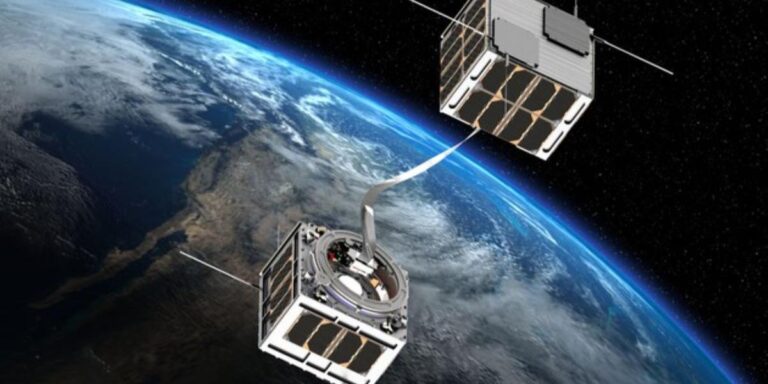European researchers are developing miniaturized space propulsion technology that is free of propellants and based on electrodynamic compounds integrating perovskite-copper-indium-gallium-diselenide (CIGS) tandem solar cells. It is intended to maneuver satellites in space or deorbit without relying on heavy propellants on board.
A European consortium is developing miniaturized space propulsion devices that operate without propellants. They are based on electrodynamic cable technology that integrates perovskite-copper-indium-gallium-diselenide (CIGS) tandem solar cells.
A recently launched project known as ETCOMPACT, short for Compact and Propellant-less Electrodynamic Tether, aims to develop a ‘green’ propulsion system that can be used for de-orbiting or maneuvering. spacecraft without relying on heavy propellants on board.
“The main challenge of the project is to reach technology readiness level four (TRL 4) for an ultra-compact green propulsion mobility module (GMM) without propellant, powered by solar energy and based on electrodynamic cable technology,” Gonzalo Sánchez-Arriaga project coordinator at Carlos III University of Madrid (UC3M). pv magazine.
This type of propulsion has the potential to “significantly reduce” satellite costs while significantly increasing the share of usable satellite mass, freeing up space for scientific experiments, antennas or cameras, said Martin Tajmar, chairman of space systems at the Dresden University of Technology. .
The project involves the development of bare photovoltaic tethers (BPT) that integrate perovskite-CIGS tandem cells with a two-terminal configuration on one side of the long conductive tether strips.
“The BPT must meet challenging requirements, such as the ability to be stored in a small radius reel, to be compatible with the space environment and to have an energy conversion efficiency of more than 12%,” Sánchez-Arriaga said, insisting noting that the team is currently doing a trade-off analysis to define things like the sizes and substrates of solar cells.
Describing the project’s BPT and electrodynamic cable technology, Sánchez-Arriaga said: “For ETCOMPACT’s GMM, we are targeting a cable length of several hundred meters. However, an interesting feature of tethers is that they are scalable in the sense that their length and width can be designed based on the mass of the satellite, its orbits and propulsion needs. For example, a 1 km long tape tether with a width of 2.5 cm and PV cells printed on one side provides an area of 25 m2.”
Considering that the solar constant is about 1.3 kW/m2, the BPT concept has “great potential” in combining bare-tether and photovoltaic technologies in a single device, according to Sánchez-Arriaga.
The electrodynamic tethers are long, conductive strips that can be attached to satellites. “When they move through the Earth’s magnetic field, these cables generate a voltage. This creates a closed circuit between the chain and the surrounding plasma atmosphere or the ionosphere. The force acting on the conductive strip is known as the Lorentz force. This principle is also applied in classic electric motors,” say the researchers.
However, this force cannot be defined as electric propulsion. “In space travel, people understand that electric propulsion is plasma thrusters, which require propellant,” Sánchez-Arriaga explains, noting that chemical propulsion and electric propulsion use hydrazine and xenon or krypton, respectively.
The three-year €4 million ($4.1 million) project is funded by the European Innovation Council’s Pathfinder programme. The consortium consists of researchers from perovskite specialist Halocell Europe, based in Italy, CIGS module manufacturer Sunplugged, based in Austria, Persei Space, a Spanish spin-off of UC3M, Deimos Engineering and Systems, part of Madrid-based Deimos Space, a space technology company. , together with the University of Padua, TU Dresden and UC3M.
This content is copyrighted and may not be reused. If you would like to collaborate with us and reuse some of our content, please contact: editors@pv-magazine.com.


